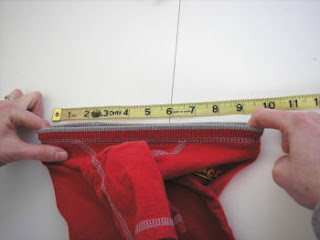
I just received a book I requested through inter-library loan called Clothing For Children by Henrietta Mary Thompson and Lucille E. Rea. I had seen used copies of this book on Amazon, but I wanted to peruse a copy before deciding to buy. The book is a college level textbook written from the perspective of Home Economists. It was published in 1949, and contains many attitudes and philosophies from the time.
There are many interesting things in the book, which I hope to share with you. One curious chapter (about 75 pages) is devoted entirely to planning the child's clothing budget. It compares what clothing to buy for each age level, gender, and income level. While the numbers are amusing, it is not really of much interest. Does it matter that an urban family with a yearly income of $500 spent $26 a year on clothing for the WHOLE family? Maybe it does. Some of the numbers are surprising, and perhaps low (comparing a Gen X'er to a Baby Boomer). It certainly demonstrates a completely different attitude toward money and a clothing budget. (BTW, I have no idea how to adjust 1949 dollars for inflation and time, so it would be difficult to have a meaningful discussion anyway). It is safe to say that the modern consumer thinks of clothing as a disposable item. How many modern parents buy clothes allowing for growth? Do we really have hand-me-downs anymore? How many of us throw away clothes with treatable stains or repairable tears? As land fills over flow and raw materials become more expensive, perhaps we need to return to this type of thinking.
Here is a breakdown of the chapters:
1. Clothing and the child - psychological theories mixed with lots of opinions.
2. Planning the child's clothing in relation to the family budget
3. The infant - Standards for infants' clothing, safety & health, and other interesting things.
4. The Creeping Age - Design ideas for toddlers
5. Clothing the preschool child (2-6 years) - interesting section on "made-overs" or using adult clothes to make new clothing for children.
6-7. Clothing for the grade school girl and boy
8. Texture and Design
9. Trimmings and decorative stitches
10. Care and storage
Appendix - Factory methods in home sewing, sewing equipment, and some shortcuts.
I will probably cover chapters 3-5 and the appendix. If there is anything else that looks interesting, or perhaps you would like to know more about, be sure to leave a comment.




